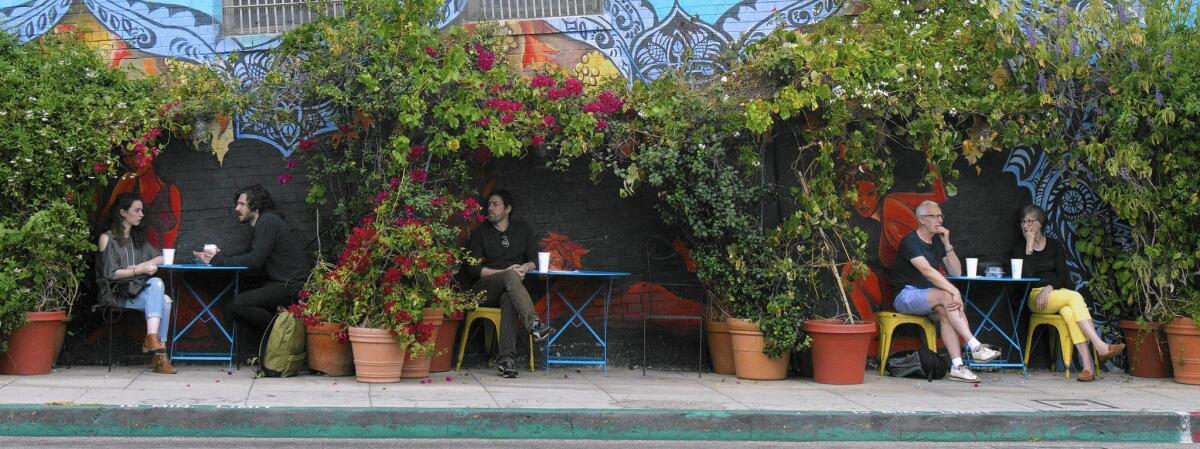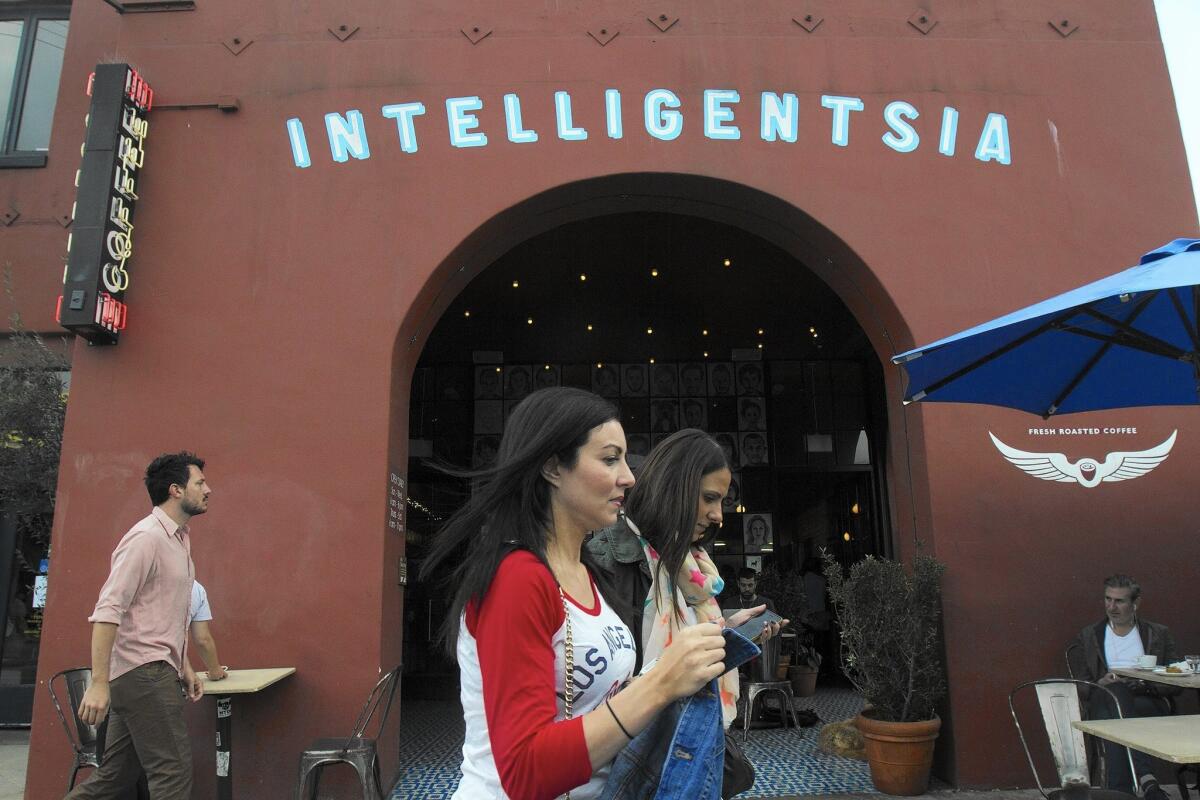Neighborhood Spotlight: Creatives, walk this way to trendy, midcentury-modern Silver Lake

- Share via
One of L.A.’s older streetcar suburbs, Silver Lake first developed as Ivanhoe, a transit-oriented stretch of homes and shops clustered on either side of Sunset Boulevard that was a short Pacific Electric Red Car ride from downtown.
That was in the early 1900s, when cars were rare and walkability was at a premium, so much so that a system of public staircases was built to provide hilltop dwellers easy access to the businesses and streetcar stops on Sunset.
The evocative name we know the neighborhood by today is a nod to former Water Board Commissioner Herman Silver, for whom the larger of the two William Mulholland-designed reservoirs at the heart of the neighborhood was named (the smaller carries on the historic “Ivanhoe” name).
By 1915, with the reservoirs complete, the northern end of the neighborhood annexed by the city, and a new bridge across the Los Angeles River providing easy access to Glendale and Atwater, Silver Lake began to see more development outside of the urban strip along Sunset Boulevard.
Then, as now, killer views and convenience to downtown and Hollywood made it a popular neighborhood for creatives, who commissioned homes designed by a veritable who’s who of notable Southern California architects including Richard Neutra, John Lautner, Gregory Ain and many other greats. Their dramatic hillside homes — often cantilevered, always stylish — made Silver Lake a showcase of midcentury-modern design.
The innovative architecture was a reflection of the progressive nature of the neighborhood. Silver Lake has a long history of tolerance; it’s historically been popular among the LGBT community, and the end of racially restrictive covenants in the 1940s opened up housing choices for minorities across the city, with many making a home in Silver Lake.
Though the Red Cars are long gone, Sunset Boulevard is still an extremely walkable oasis, with trendy restaurants, boutiques, and bars stretching from Los Feliz to Echo Park. The reservoirs are currently undergoing a modernization process that may convert them into a promenaded recreation area akin to Echo Park. And the homes that define Silver Lake style are as in demand as ever — with prices to match.

The southern half of Silver Lake is a dense shopping and entertainment district, where you can go carless.
Neighborhood highlights
Urban vibes: The southern half of Silver Lake is a dense, bustling shopping and entertainment district, where within a few blocks you can grab a coffee, hit the farmers market, meet friends for brunch and later that night catch a live band — all without getting in your car.
Run and relax: The reservoirs are a great place to jog or walk your dog — and if plans for a revamped park on the site are realized, Silver Lake could become your next favorite place to lie in the sun.
Midcentury-modern heaven: Sure, there are plenty of beautiful Spanish colonial revival homes in Silver Lake, but those glassy boxes in the hills are the real draw for arch-nerds.
Neighborhood challenges
Once again, gentrification rears its ugly head. When soaring demand meets low inventory, something’s gotta give, and that often means longtime residents become priced out. Many neighborhood activists are also concerned about out-of-scale in-fill development and mansionization.
Expert insight
John Galich, an agent with Rodeo Realty, said a lack of move-in-ready properties is one of the biggest challenges his clients face when buying in the area.
“There’s not as much competition as there was a few years ago,” he said, “but there’s also much less quality inventory available.”
Still, Galich sees no diminishing level of interest in the neighborhood known for its urban singularity and creative backbone, particularly among out-of-area clients.
“The majority of my buyers transferring from New York are in some sort of creative field,” he said. Silver Lake “reminds them of everything that New York was.”
Market snapshot
Portions of the 90026, 90029 and the 90039 overlap the Silver Lake area. In March, based on 27 sales, the median price for single-family homes in the 90026 ZIP Code was $899,000. In the 90029 ZIP Code, based on 4 sales, the median price was $695,000, and in the 90039 ZIP Code the price was $850,000 based on 14 sales.
Report card
Ivanhoe Elementary, one of the area’s most coveted public schools, topped the list with 944 out of 1,000 in the 2013 Academic Performance Index. Thomas Starr King Middle came in at 843 and Allesandro Elementary scored 839. Micheltorena Street Elementary had a score of 741.
Silver Lake profile
Total population: 30,168
Diversity:
Asian: 15%
Black: 3%
Hispanic: 29%
White: 49%
Other: 3%
Median age: 38
Rent vs. own: 66.5% / 33.5%
Median income: $68,215
Education:
Bachelor’s degree: 36%
Master’s or higher degree:
17%
Transit: The Vermont/Beverly and Vermont/Santa Monica Metro stations are nearby.
Drive times:
To LAX: 25 minutes (without traffic)
To Staples Center: 9 minutes (without traffic)
Sign up for Essential California
The most important California stories and recommendations in your inbox every morning.
You may occasionally receive promotional content from the Los Angeles Times.



